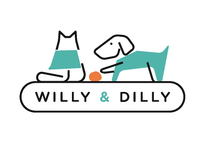How Much You Should Feed Your Dog
Just like humans, the portions of food a dog eats is important. If a dog is nutritionally underfed, it can suffer and go hungry - not to mention the risk of poor health and personality this causes. Likewise, if a dog is overfed, you can impose severe health risks such as obesity and problems with their bones from carrying too much weight.
Risks that come from under or overfeeding your dog can include:
- Heart failure
- Difficulty breathing
- Cancer
- Skin diseases
- Low quality of life
- A short life span
How Much to Feed your Dog
How much you should feed your dog depends on their weight, the type of food you’re feeding them, the number of meals they’re having per day, their metabolism and the amount of exercise they receive.
You should always read the suggested feeding guide usually found on the back of the box or bag of dog food. This information will tell you the suggested portion size for your dog in comparison to their size or weight, usually for a 24-hour period.
Adult dogs will normally be fed twice a day e.g. at breakfast and dinner times. However, a younger puppy can require more frequent feeding e.g. three times a day. To work out the amount of food needed to feed your puppy, divide the suggested feeding amount by the number of feeds that are offered to lessen the risk of over-feeding or indeed, underfeeding.
Consider Your Dog’s Lifestyle
Now that you have worked out the suggested feeding for your dog from its packet of food, you should consider your dog’s lifestyle in order to make a more informed decision on how much you should feed your dog.
For example, if you have a medium-to-large sized dog, such as a Labrador, who is prone to gaining weight, you might want to reduce the portion size given if they receive limited exercise.
Whereas, if you have a miniature-to-small sized dog who is hyperactive and full of energy, you might want to consider increasing the size of their feeding portions.
Like humans, a dog’s lifestyle has an effect on how their bodies store food which is why different lifestyles require different portions and feeding styles. Consider exercising your dog or playing with them to increase their exercise. Check out the toys that our dogs, Willy & Dilly, love to play with here.
In order to give your dog the best quality of life and limit health risks from under or overfeeding, you can also consider using calorie counters, finding out your dog’s body condition score and tracking their weight.
If you’re concerned about your dog and issues with diet and feeding, please contact your local vet for professional advice.
Related blog: Are Pull Toys Safe for Dogs?
